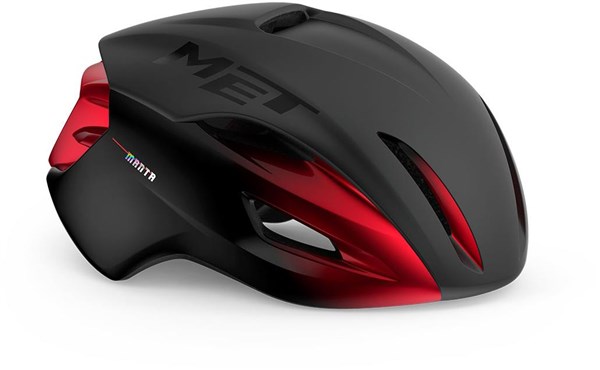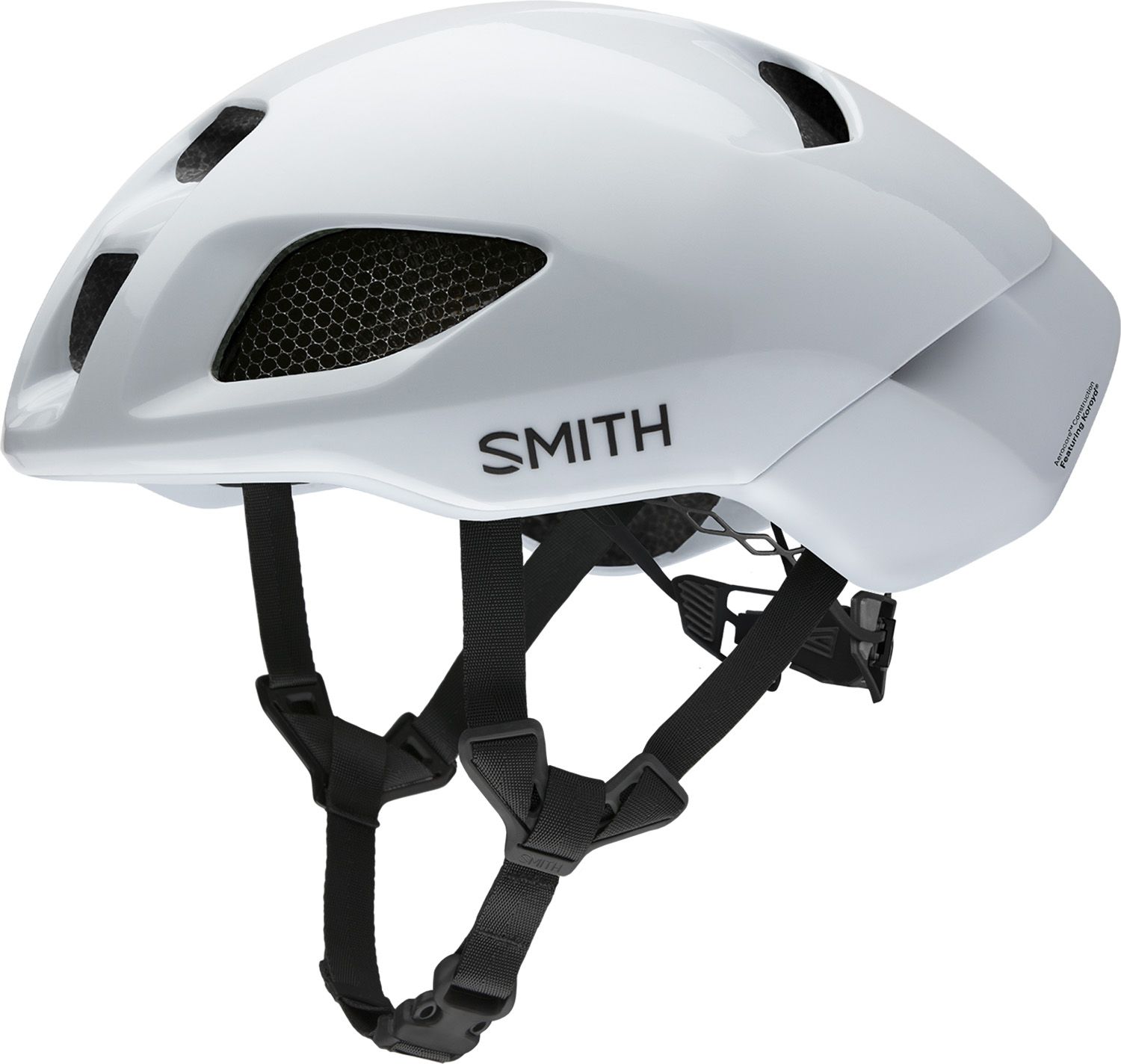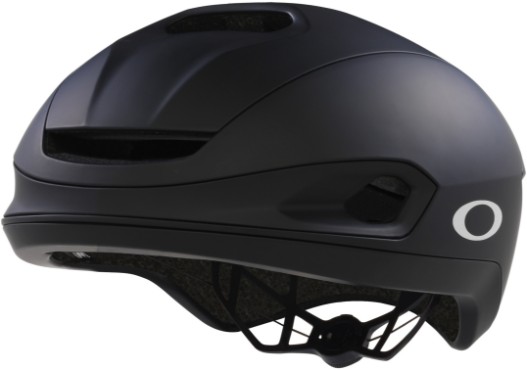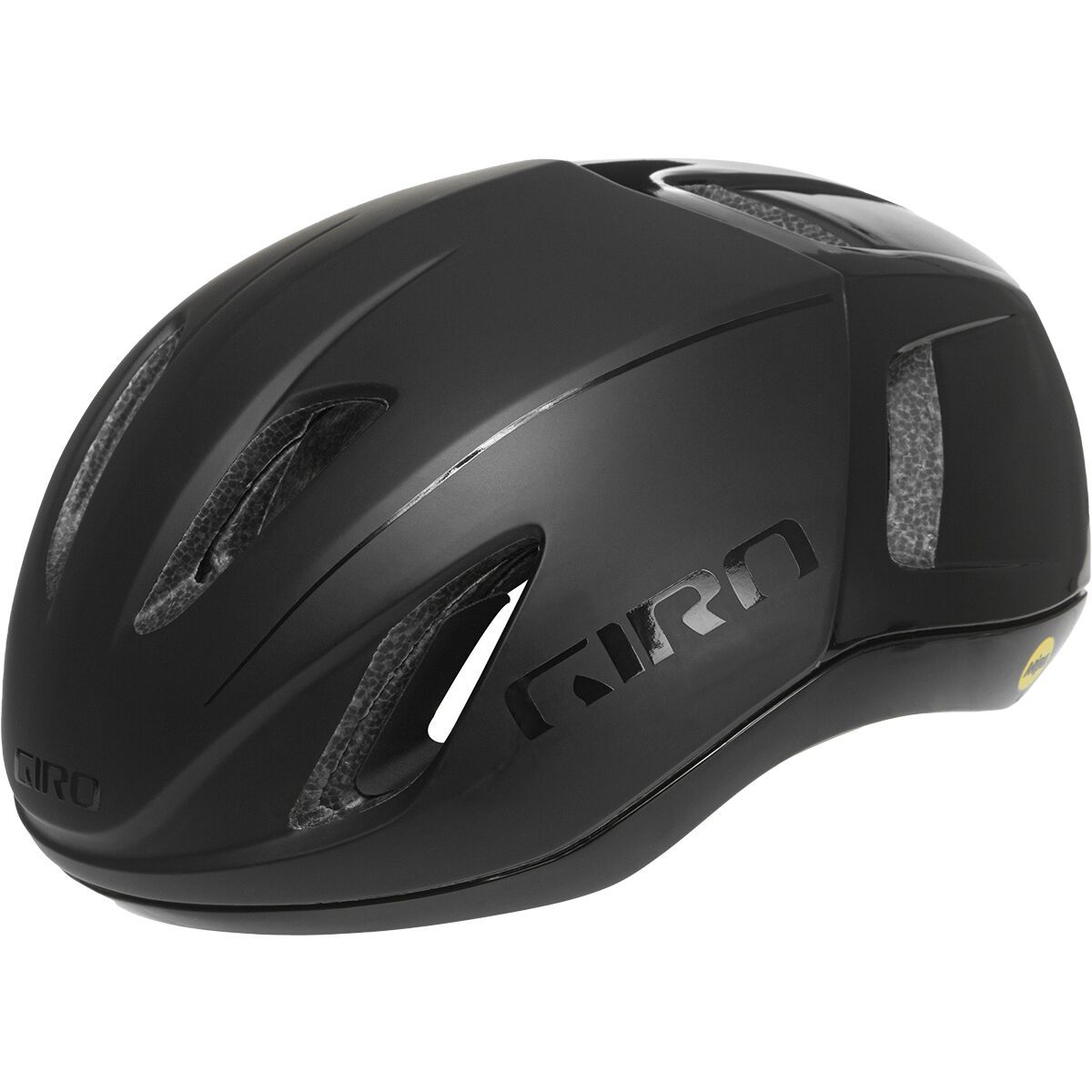Best aero helmets for triathlon speed in 2025
Aero helmets come in a range of shapes and sizes. Here, we test 14 of the best for triathlon

The popularity of aero road helmets has exploded in triathlon, sending the long-tailed TT helmet towards the margins as savvy triathletes have realised that aerodynamics, comfort and ventilation could come in one helmet package.
You’ll still see both on the race track, of course, so read on for our reviews of a range of top aero road helmets.
To help you find the fastest aero road helmet, we’ve tested all of these helmets below in a wind tunnel, which few publications do, to determine their aerodynamic efficiency.
Our expert bike tester Matt Baird rode at the equivalent of two different speeds wearing each helmet. Wind tunnel staff recorded the drag produced and extrapolated the time it would take to complete a 40km / 25mi time-trial relative to our control helmet.
On this page, you’ll also find our guide to what an aero road helmet actually is, and an overview of how we tested (in and out of the wind tunnel).
Why you can trust 220 Triathlon
Our team of experts rigorously tests each product and provides honest, unbiased reviews to help you make informed decisions. For more details, see how we rate and test products.
Best aero helmets at a glance
Safe, fast and cool, the Specialized Evade 3 (buy) is the best overall.
The HJC Furion 2 (buy) was the second fastest helmet in our wind tunnel test and is seriously light.
With 14 vents and outstanding ventilation, the Giro Eclipse Spherical (buy) keeps your head cool at speed.
If you’re happy to compromise ventilation and weight for outright speed, go for the Scott Cadence Plus (buy).
The Van Rysel Road Bike Helmet RCR (buy) is excellent value for money, proving you don’t need to spend hundreds of dollars or pounds for a fast helmet.
Best aero helmets we’ve tested in a wind tunnel
Best aero road helmet for triathlon

1. Specialized S-Works Evade 3
220 Triathlon verdict
Not cheap, but brilliant performance. This is undoubtedly one of the best aero helmets for triathletes. Score: 88%
Pros
- Impressively aero
- Great safety features
Cons
- On the pricey side
- Strap system not perfect
| Price | $300 / £250 |
| Sizing | S, M, L |
| Weight | 275g / 9.7oz |
| Features | MIPS, nine vents |
The Evade 2 scored well in our tests previously (see below), and Specialized says that the Evade 3 has ‘maintained’ the aero performance of its predecessor, while increasing ventilation with nine vents.
Honestly, it strikes the sweetspot between speed and breathability superbly.
On the downside, I’m not so keen on the Tri-Fix web strap system, which feels uncomfortable under the ears.
The helmet boasts a MIPS Air Node liner and scored a five-star rating by the Virginia Tech institute’s helmet lab.
A weight of 275g / 9.7oz is about standard and it’s tidily finished.
In the wind tunnel it was 31.8secs faster over 40km / 25 miles at 30km/h / 19mph than our baseline Decathlon helmet and 10secs faster at 40km/h / 25mph. Both results put the Evade 3 in the top half of the 11 helmets we tested.
Find out more in our full Specialized Evade 3 review.
Highly-rated

2. HJC Furion 2.0
220 Triathlon verdict
A fine effort from HJC. The Furion 2.0 is quick, comfortable and one of the lightest aero road helmets around. Score: 88%
Pros
- Lighter than most aero road helmets
- Solid wind tunnel performance
Cons
- No MIPS
- Not much else to fault
| Price | £180 (US pricing N/A) |
| Sizing | S, M, L |
| Weight | 216g / 7.62oz |
| Features | Selfit system, sunglasses port |
HJC’s Selfit retention system takes some getting used to, but I grew to like. The internal adjustment mechanism is decent, but I’d like to see more padding on the front for long-distance racing.
There’s no MIPS or Virginia Tech rating, but there is an internal frame integrated into the EPS form for reinforcement.
In the wind tunnel the Furion 2.0 was 18.6secs faster than our baseline Decathlon helmet at 30km/h / 19mph and 19.4secs faster at 40km/h / 25mph. The latter makes it the second fastest helmet tested by 220 in 2024 at that speed.
A weight of 216g / 7.62oz is class-leading.
Read our full HJC Furion 2.0 review for our full verdict.
Best for ventilation

3. Giro Eclipse Spherical
220 Triathlon verdict
If you can afford it, this is one of the most well-balanced aero helmets around. Score: 87%
Pros
- Ventilation works very well
- Plush padding
Cons
- Some competitors are lighter
- Not cheap
| Price | $250 / £239.99 |
| Sizing | S, M, L |
| Weight | 277g / 9.77oz |
| Features | 14 vents, anti-microbial padding, MIPS |
Giro launched the aero road helmet movement in 2012 with the Air Attack, so any launch from the brand demands attention. So it is with the Eclipse Spherical.
The Roc Loc 5 Air system’s internal fitting mechanism and slick retention dial swiftly secures an optimum fit, while the plush yet lean Ionic+ padding sits in the perfect place on the forehead for comfort and sweat mopping.
The Eclipse boasts 14 ventilation channels and breathability felt good.
Admittedly, it wasn’t among the best performers in our wind tunnel testing in May 2024, coming eighth out of 11 at both 30km/h / 19 mph and 40km/h / 25 mph (with a yaw angle of 7.5° and a rider on tri-bars). That said, it’s still likely to have the edge over standard road helmets.
The Spherical tech may be the most effective integration of MIPS (Multi-directional Impact Protection System) I’ve seen and the outer shell is smoothly integrated into the EPS core to complete a classy look.
The 277g / 9.77oz weight’s decent enough, but that and the wind tunnel results, is all that’s mid-table about this low-profile, tech-laden helmet.
Read our full Giro Eclipse Spherical review for more.
Best aero road helmet for speed

4. Scott Cadence Plus
220 Triathlon verdict
Pricey but unique. One of the best aero road helmets for year-round riding. Score: 86%
Pros
- Great aero performance
- Comfortable and easy to adjust
Cons
- A little heavy
- Limited ventilation
| Price | $242.98 / £242.98 |
| Sizing | M, L |
| Weight | 284g / 10oz |
| Features | Removable aero plugs, internal tension adjustment, MIPS |
A standout of the Cadence Plus are its Aero Plugs or winter bungs (an extra $16.60 / £12.99), which can be shoved into the ventilation channels on colder days or if you’re seeking an aero advantage where heat isn’t a major consideration.
The Cadence Plus features an exceptional internal adjustment mechanism that was instantly secure and easy to adjust.
Internal comfort is high thanks to some great padding and this sits atop of the MIPS Air Node system.
Against our baseline Decathlon helmet the Cadence Plus was an enormous 53.8secs faster over a 40km bike leg at 30km/h / 19mph and 39secs faster when riding at 40km/h / 25mph.
Meanwhile, the helmet scored four stars in the Virginia Tech institute’s safety tests.
It weighs 284g / 10oz weight, increasing to 338g / 13.69oz with the bungs in place, which is a little on the heavy side, but it’s wind tunnel performance was impressive.
Worth noting, though, is that the tests were conducted with the bungs in place, but it’s performed well in previous tests without bungs.
See our full Scott Cadence Plus review for more detail.
Best budget aero road helmet

5. Van Rysel Road Bike Helmet FCR
220 Triathlon verdict
One of the best aero road helmets for triathletes on budget. Score: 85%
Pros
- Incredible value
- Comfortable
Cons
- No MIPS or Virginia Tech institute rating
- Heavy
| Price | £99.99 (US pricing N/A) |
| Sizing | S, M, L |
| Weight | 290g / 10.22oz |
| Features | Magnetic chin strap buckle, sunglasses port, five vents |
What a treat from Decathlon – an aero road helmet for less than £100. There’s plenty of tri appeal in the Road Bike Helmet FCR.
For one, there’s a magnetic chin buckle, which is easy to use with chilly fingers.
The aero performance was also reasonable for a helmet at this price point. Yes, it was the slowest out of the 11 helmets tested in the wind tunnel at speeds of 30km/h / 19mph, but at 40km/h / 25mph it outperformed the Kask Elemento by 5secs over a 40km / 25mi distance.
There’s no MIPS nor any rating from the Virginia Tech institute, but it does comply with European regulation EN1078.
Ventilation is reasonable, while I was a fan of the slightly wider fit, too.
A weight of 290g / 10.22oz isn’t ideal, but isn’t particularly noticeable while on the road.
Getting the right fit is easy enough and comfort is decent, too, making this a great value option.
Find out more in our full Van Rysel Road Bike Helmet FCR review.

6. Met Manta MIPS
220 Triathlon verdict
Quick, comfortable and lightweight – the Manta MIPS is one of the best aero helmets around right now. Score: 85%
Pros
- Decent weight
- Performed well in the wind tunnel
Cons
- No Virginia Tech rating
- Excess straps not ideal
| Price | $299 / £220 |
| Sizing | S, M, L |
| Weight | 251g / 8.85oz |
| Features | MIPS, magnetic buckle, tension and vertical adjutsment |
The Met Manta MIPS has a tri-friendly magnetic buckle, which is great for quick transitions.
What’s not so great is the excess straps, which feel counterproductive given the efforts that’s gone into improving aerodynamics elsewhere.
Safety is boosted by MIPS, but the helmet hasn’t yet been tested by the Virginia Tech institute as of June 2024.
The lid offers plenty of comfort and the rear cradle delivers a decent 3.5cm of vertical adjustability. The retention dial is easy to adjust on the go, too.
Venting’s fine for an aero helmet and 251g / 8.85oz is very impressive. In the wind tunnel, the Manta MIPS outperformed our baseline Decathlon helmet, being 31.8secs faster over a 40km / 25-mile bike leg at 30km/h / 19mph and 9.2secs quicker than it when riding at 40km/h / 25mph.
See our full Met Manta MIPS review for more.

7. Abus GameChanger 2.0
220 Triathlon verdict
A marked improvement over the original, but still not flawless. Score: 82%
Pros
- Decent aerodynamics
- Great safety features
Cons
- Still likely to be too narrow for some
- Little on the heavy side
| Price | $309.99 / £260 |
| Sizing | S, M, L |
| Weight | 284g / 10oz |
| Features | Sunglasses port, height and tension adjustment dial, ponytail compatible |
I found the original GameChanger too narrow and uncomfortable. Thankfully, the sequel is a step-up thanks to the slighter wider fit, albeit it’s still quite narrow so wide-headed cyclists beware.
It employs the MIPS Air Node safety system and received a five-star rating at the Virginia Tech institute for helmet safety, though you can also buy a non-MIPS version for $267.99 / £225.
With a large array of forward-facing airflow channels, airflow is impressive for such an aero-focussed helmet.
The Fidlock magnetic buckle is great for triathletes, as it’s effortless and swift to connect or undo.
Weight is 284g / 10oz, while in the wind tunnel it was 27.3secs faster over 40km / 25mi than our baseline Decathlon at 30km/h / 19mph and a 14.4secs faster at 40km/h / 25mph.
See the full Abus GameChanger 2.0 review for more.

8. Smith Ignite MIPS
220 Triathlon verdict
Quick and great safety credentials, but lack of ventilation sees it lose points. Score: 84%
Pros
- No slouch in the wind tunnel
- Impressive safety features
Cons
- Better ventilation needed for hot days
- Not the most lightweight
- $250 / £229
| Price | $250 / £229 |
| Sizing | S, M, L |
| Weight | 283g / 9.98oz |
| Features | MIPS, six vents |
The Smith Ignite MIPS has a lot going for it, including great safety features.
The helmet uses Koroyd material inside the two main vents for impact protection and energy absorption, but it also keeps bugs out.
You also get the MIPS brain protection system, which is great to see.
In the wind tunnel in May 2024, it was the second fastest aero road helmet out of 11 on test at 30km/h / 19mph, though it was seventh out of 11 at 40km/h / 25mph.
There are six vents on the front of the helmet, but these struggled when it came to airflow on hot days or hilly courses.
The padding proved comfortable, but getting the split straps to sit flush against my face wasn’t easy.
Weight is 283g / 9.98oz in a size medium.
For more detail see our full Smith Ignite MIPS review.

9. Kask Elemento
220 Triathlon verdict
An incredibly well-vented helmet, but it suffers in the wind tunnel as a result. Score: 70%
Pros
- Very good ventilation
- Largely comfortable
Cons
- Expensive
- Middling aero performance
| Price | $400 / £335 |
| Sizing | S, M, L |
| Weight | 277g / 9.77oz |
| Features | WG-11 certification, 14 vents |
There’s no conventional padding here. Instead, the Elemento uses a Multipod beehive material located internally at the top of the helmet. It’s job? To keep the helmet away from the skull to improve airflow, which it does effectively.
The retention dial works well, but for the money I’d like to see the brand’s luxurious leather chinstrap of previous models. The basic buckle included here proved difficult to connect in haste.
There’s no MIPS here, but the helmet has gone through Kask’s WG-11 Rotational Impact Test (which has also been used by Rudy Project for the Nytron).
In the wind tunnel the Elemento didn’t fair too well against the other helmets on test coming toward the back of the pack, but this helmet does feature a lot of ventilation.
See the full Kask Elemento review for more.

10. Oakley Aro7
220 Triathlon verdict
The Aro7 is a decent helmet, but it does have a few flaws (an a high price!). Score: 75%
Pros
- Broader appeal versus the original
- Included visor offers great clarity and protection
Cons
- Heavy
- Didn’t excel in our wind tunnel tests
| Price | $260 / £272 |
| Sizing | M, L |
| Weight | 370g / 13oz (including visor) |
| Features | MIPS, seven vents, BOA rear dial |
The latest Aro7 offers broader appeal than its predecessor, which was time-trial-focussed.
That’s good news, but the loss of the magnetic chinstrap isn’t, making it more of a faff. Finding an ideal fit is otherwise easy enough.
There’s limited venting on offer here, while the wind tunnel performance was middling.
The Aro7 was just 2secs faster than our baseline Decathlon helmet over a 40km / 25mi bike leg at 30km/h / 19mph, and was 4secs slower at 40km/h / 25mph.
That said, in the interest of consistency, the helmet was tested with the same sunglasses as the other helmets were tested with, rather than with the helmet’s dedicated visor, which is likely to have improved performance here.
Speaking of which, the included clear and tinted Prizm visors offer plenty of clarity and fit securely to the helmet.
A weight of 370g / 13oz (including visor) leaves a little to be desired, though.
See our full Oakley Aro7 review for more.

11. Rudy Project Nytron
220 Triathlon verdict
Slick, stealthy, vented and versatile. Score: 86%
Pros
- Versatile helmet
- Good ventilation
Cons
- Doesn’t use MIPS
- Ratchet system not the most durable
| Price | $324.99 / £189.99 |
| Sizing | S-M, L-XL |
| Weight | 268g / 9.45oz |
| Features | WG11 rotational impact system |
Swiss Side are one of the most celebrated aero experts in cycling, and the Nytron here is a collaboration with their no-stone-unturned tech team and Rudy Project, themselves no lightweight in the aero arena.
The wind-tunnel development is evident in the aero tail and 15 stealthy exhaust ports, the latter making this one of the most vented and versatile lids here for a variety of tri situations.
Thankfully, in our independent wind tunnel testing, that development was there for all to see, placing third out of the 11 helmets tested at the time at a speed of 40km/h / 25mph.
It’s one of the cheapest aero helmets around, but is still expensive, which makes the cheap plastic casing on the ratchet system an unwelcome surprise that’s already showing signs of wear.
The padding, straps and retention system are all unflashy but functional.
MIPS is missing, but there’s Rudy Project’s WG11 rotational impact system. Weight is a decent 268g / 9.45oz.
Read our full Rudy Project Nytron review for more.
Wind tunnel test results
Take a look at the table below to see a breakdown of which helmet was fastest over 40km / 25mi. The times are shown in seconds, with the testing conducted with a yaw angle of 7.5° and at two speeds, 30km/h / 19mph and 40km/h / 25mph.
Testing was done with the same rider in the same aerodynamic position on aerobars. Read more about how we tested further down this article.
| Helmet | Time (secs) @ 30km/h / 19mph | Time (secs) @ at 40km/h / 25mph | ||||
| Van Rysel Road Bike Helmet FCR | 4799.99 | 3599.99 | ||||
| Oakley Aro7 (without visor) | -2.16 | +4.34 | ||||
| Kask Elemento | -3.49 | +5.19 | ||||
| Giro Eclipse Spherical | -11.44 | -0.18 | ||||
| HJC Furion 2.0 | -18.63 | -19.44 | ||||
| Abus GameChanger 2.0 | -27.30 | -14.42 | ||||
| Rudy Project Nytron | -30.69 | -15.27 | ||||
| Specialized Evade 3 | -31.80 | -10.01 | ||||
| Met Manta MIPS | -31.84 | -9.17 | ||||
| Smith Ignite MIPS | -34.41 | -9.14 | ||||
| Scott Cadence Plus (with bungs) | -53.78 | -38.98 |

12. Limar Air Speed
220 Triathlon verdict
Plenty of tri appeal and success in the wind tunnel, too. Score: 90%
Pros
- Great aerodynamics
- Magnetic buckle a bonus
Cons
- No MIPS
- Ventilation could be better
| Price | £148 (US pricing N/A) |
| Sizing | S, M, L |
| Weight | 259g / 9.14oz |
| Features | Magnetic chin strap buckle, 12 vents, height and tension adjustment dial |
Limar has made a concerted effort to move into the triathlon market, attracting British ITU racers into the fold and adding a magnetic buckle on the chinstrap for added transition appeal for cold, post-swim fingers.
Limar’s own positive tunnel testing has only extended to athletes riding on the hoods.
Our tri-bar Boardman tunnel analysis, however, confirms that this is one swift lid, regularly coming second behind the S-Works Evade II or Giro Vanquish MIPS (especially at the key 45km/h / 25mph speed and 0° yaw angle).
In terms of safety, there’s no MIPS protection (you can now choose a model with it included, though) but the retention system is secure, while venting from the 12 channels on hilly, sticky days is acceptable. Weight is a decent-enough 259g / 9.14oz.

13.Giro Vanquish MIPS
220 Triathlon verdict
Swift and comfy, but costly and we’re not set on the visor. Score: 84%
Pros
- Well ventilated
- Comfortable
Cons
- Not the lightest
- Expensive
| Price | $300 / £249.99 |
| Sizing | S, M, L |
| Weight | 355g / 12.52oz |
| Features | Magnetic removable visor, sunglasses grippers, MIPS |
The Vanquish MIPS is unique among the competition here as it comes with a magnetic Shield Visor.
The visor provides good clarity but there’s a clear gap between that and the face, giving me concerns about detritus flicking up.
That’s a shame, as the helmet offers sound ventilation via its 10 well-placed vents, there’s MIPS (Multidirectional Impact Protection System) and comfort from the Roc Loc system (the buckle is fiddly, however).
Our Boardman wind tunnel results saw it regularly come behind only the S-Works Evade II.
It excelled at 0° yaw angle and 35km/h / 22mph speed, but was even better in an aggressive aero position.
Despite the 355g / 12.52oz figure, it doesn’t feel like a weighty lid when riding. It does have a very high RRP, however.

14.Spiuk Profit Aero
220 Triathlon verdict
Good price, great shell, less impressive strap. Score: 83%
Pros
- Tri-friendly features
- Decent aero performance
Cons
- Only two sizes available
- Padding is a little limp
| Price | £110 / €129 (US pricing N/A) |
| Sizing | S-M (51-56), M-L (53-61) |
| Weight | 274g / 9.7oz |
| Features | Magnetic Fidlock buckle, Boa dial |
Given the brand made my first-ever tri-suit, I’ll always have a place in our tri heart for Spiuk.
If its UK triathlon exposure has reduced since 2008, the Profit Aero comes with the backing of former ITU World Champ Mario Mola and with plenty of multisport flourishes.
These include a magnetic buckle and Boa retention dial for T1 speed, while the brand’s aero focus has produced a helmet that delivers in the wind tunnel, coming only marginally behind the twice-the-price Kask (especially at 0° yaw angle).
The nine vents are effective enough, but the limp padding and frustratingly fiddly straps show where some cost compromises have been made.
Only two available sizes also limit the chances of perfecting your fit.
We’re proud to say that we’re one of the only publications worldwide to regularly test our aero helmets in the wind tunnel.
The reason is that nearly every brand claims to produce the world’s fastest helmet, but still refuse to release the raw tunnel data from their own tests.
As our wind-tunnel results show, some helmets only perform at certain angles and speeds, so, while a helmet may technically be the fastest at a 20° yaw and riding at 55km/h / 34mph, that doesn’t mean it performs across a range of wind directions and riding speeds.
Given that the vast majority of a 180km / 112mi Ironman bike leg is spent riding below 10° yaw (98% at IM Arizona, 72% at Kona, for example), the 0°, 7.5° and 5° angles especially were the key focuses for us.
Wind tunnel testing

Our most recent wind tunnel testing took place at the Silverstone Sports Engineering Hub in May 2024 under the supervision of aero expert Stephen Roche (AKA, The Bike Tailor) and wind tunnel engineer Nick Richards.
This test was conducted with a yaw angle of 7.5°, which is often used as a real-life baseline, as it’s consistent with what you’ll find out on the road.
We used the same rider, tri-suit and sunglasses throughout the testing, and ensured the model kept the same position for each test by making use of the wind tunnel’s rider outline guides.
These allowed us to keep an eye on the rider and ensure he didn’t deviate from a consistent position on his tri-bars.
Power was kept consistent throughout testing at 150w, and we tested at both 30km/h / 18mph and 40km/h / 25mph, capturing 100 data points every second and recording each run over 30secs to get an average CdA.
Real-world testing
A key aspect in our testing criteria is ventilation. An aero road helmet should also provide better ventilation than a TT lid in summer racing and, as our year-round testing has proven, some protection from those beastly easterly winds in the winter.
Other key factors are the effectiveness of the retention system for comfort and fit; the ability of the buckle to be unclipped (especially with cold post-swim fingers); and the helmet’s often-overlooked modus operandi, safety.
All of the helmets here have passed the relevant European bike helmet safety tests, but also look out for added safety features such as the MIPS system. And if safety is your primary concern, bear in mind that the best budget bike helmets can be as safe as the priciest models.
What is an aero road helmet?
While the weight of an aero road helmet is typically higher than a standard road helmet, our wind-tunnel tests at the Silverstone Sports Engineering Hub in late 2020 and at the Boardman Performance Centre in 2019 have shown an aero road helmet can be 3:22mins faster than a vented lid over a 180km / 112mi Ironman bike leg, a healthy saving for those vying for age-group honours.
Much of this, of course, depends on an athlete’s ability to keep their head in the same aero position, but the drag penalties of moving one’s head aren’t as high on an aero lid as when riding in a TT helmet.
Aero road helmets will generally have had more development in the wind tunnel than standard lids to ensure they slip through the air more smoothly, so you may see less ventilation on offer.
They’re also different to out-and-out triathlon or TT helmets (often referred to as aero helmets), which often have a teardrop shape and a tail at the rear.
Your next cycling helmet should be an aero helmet because they’re typically more aerodynamic, but they do come with a weight penalty, offer less ventilation and can suffer on windy days.
How to tell if your helmet fits properly

Correct helmet fit is crucial for safety, comfort and aerodynamic performance (for example, loose straps will cost you precious watts.)
First and foremost, the size has to be right. You also have to properly position the padding and ensure the helmet isn’t wonky or tilted on your head. You want the strap to be snug under your chin, so you can only just slide a finger beneath it.
To improve the helmet fit, look out for helmets with rear dials that you can tighten as well as change of the height of. This vertical adjustment is helpful because, depending on the shape of your head, you may want the helmet higher or lower. What’s more, when you tilt forwards in an aero position, a helmet that’s positioned too low on your head may interfere with your sunglasses or obstruct vision.
How to choose the right shape for your aero helmet
The optimal aero helmet shape is personal: what’s fastest for one person might be slower for another. You’ll have to consider the length of the tail, the width of the helmet and the texture of its surface.
The surest way to find the fastest helmet for you is to book your own aero testing in a wind tunnel. For most age-groupers though, this will be prohibitively expensive.
Instead you could borrow a bunch of helmets and conduct your real-world aero testing on them. Again, this is easier said than done.
Alternatively you can hedge your bets and opt for a helmet that generally scores well in independent wind-tunnel and suits your head shape and budget.
Read more about aero helmet shape.
Why do triathletes use aero helmets

As fast as aero road helmets can be, all-out aero helmets remain popular among triathletes for their potentially superior aerodynamics.
You’ll still see them race aero or TT-style helmets in long-distance races in cooler conditions where the reduction in drag outweighs the risk of overheating.
But triathlon is raced in ever warmer conditions, where ventilation and cooling is vital to maintain performance. Plus, as our own testing has shown, in the gap in speed between aero road helmets and full-on aero helemts has diminished considerably.
We go into more detail in our guide to using aero helmets for triathlon.
Do I need an aero helmet for triathlon?
Following the previous question, you might be wondering: ‘do I need an aero helmet for triathlon?’ The case against says the aero road helmets we’ve reviewed here offer better ventilation and similar drag-reduction while the case for says a correctly fitting aero helmet will be faster almost everywhere.
How to choose the right cycling helmet for race day

For triathlon racing, you can choose between aero helmets, aero road helmets and the vented road bike helmets.
When speed is the priority, choose an aero helmet and go for an aero road helmet to balance cooling and aerodynamics.
On a really hot, hilly day, a lightweight road bike helmet might be best. To save money, just wear the helmet you already own. Read more about how to choose the right race-day helmet.
What do all the different bike helmet safety certifications mean?
Helmet safety is of paramount importance, so you’ll be reassured to know that all bike helmets for sale have to meet minimum safety standards. Increasingly these requirements overlap in Europe, America, Australia and Asia.
Some helmets include extra protection in the form of MIPS or the brand’s proprietary feature.
Head to Virginia Tech University’s Helmet Ratings website to see how hundreds of models fare in the world’s largest independent helmet safety test.
Read more about helmet safety certifications.























